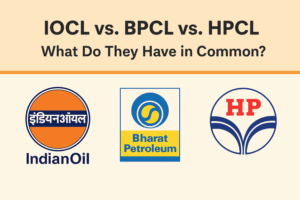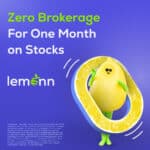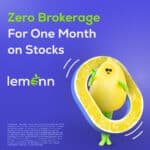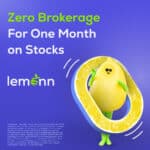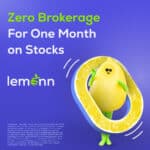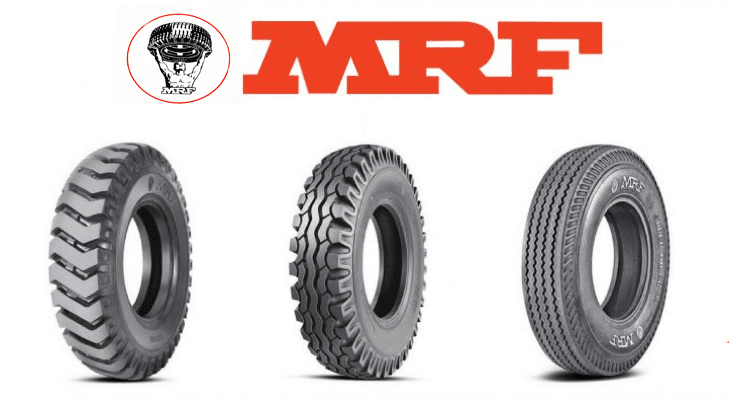
Key Highlights
- MRF Limited, a leading tyre manufacturer in India, stands out in the stock market with its exceptionally high share price, often perplexing investors unfamiliar with its consistent performance.
- This blog explores the various factors driving MRF’s high valuation, including its dominant market share, impressive financial performance, and robust brand reputation.
- We’ll uncover the role of strategic expansion, technological innovation, and investor confidence in propelling MRF’s share price.
- Analyzing its business model and financial fundamentals while comparing it with competitors will provide deeper insights into its market position.
- Lastly, we’ll address the challenges and opportunities for potential investors considering MRF, understanding the risks associated with high-value stocks and evaluating its future growth prospects.
Introduction
In the busy world of the Indian stock market, MRF shares are unique because they have a very high price. This often leads investors to wonder why. MRF is well-known as a top tyre manufacturer. However, the reasons for its high share price might confuse some. This article will look closely at what makes MRF shares so valuable. We will explore its financial performance, how it leads in the market, what investors think, and its future outlook.
Understanding the MRF Phenomenon
MRF Limited, known as Madras Rubber Factory, is a major player in the Indian tyre industry. It has a strong market presence because it delivers high-quality products and maintains a good brand reputation. The company started in 1946 and has grown to be a leader in tyre manufacturing in India.
MRF’s steady success over the years is due to the growing automotive sector. This has made it a trustworthy and profitable company. Because of this continuous success, people understand why the MRF share is valued highly in the stock market.
A Brief History of MRF’s Market Performance
MRF has had a strong journey in the stock market. This shows how well it has grown and created value for its shareholders. MRF started as a small rubber balloon maker and grew to be India’s largest tyre company. Its stock price reflects this success.
Over the years, the stock has seen great growth. This is due to things like gaining market share, producing more tyres, and focusing on research and development. These smart choices, along with good market conditions, have led to steady increases in stock price.
As the Indian economy keeps growing, there will likely be more demand for vehicles and tyres. This expected growth makes investors confident in MRF’s future. Because of this, they are willing to pay more for its shares.
Key Factors Driving MRF’s Share Price
One main reason for MRF’s high stock price is its strong earnings. Each year, MRF shows good financial results, with nice profit margins and a solid history of making profits and cash flow. This constant ability to earn money helps the company reward its investors and keep a high value.
Also, MRF has a high PE ratio. This means investors are willing to pay more for its earnings. A high PE ratio shows that investors believe in the company’s future growth. They are counting on MRF to keep providing value, so its high stock price reflects this good outlook.
Finally, MRF’s strong place in the market and its brand value are important for its high valuation. As a leader in the tyre industry, MRF takes advantage of its strong brand recognition and big distribution network. This puts MRF in a leading position, allowing it to charge higher prices for its products. This pricing power boosts profits and helps explain the high stock price.
Analyzing MRF’s Business Model
MRF’s success comes from its strong and flexible business model. The company makes many types of tyres for different vehicles. This includes tyres for passenger cars, trucks, buses, two-wheelers, and even off-road vehicles. By doing this, MRF reduces risks from focusing on just one type of market. It also finds chances for growth in different areas.
Additionally, MRF works hard to keep its distribution network strong. This ensures that its tyres are easy to find for customers everywhere in the country. MRF has a wide reach in both cities and rural areas. It also builds solid relationships with dealers and distributors. This helps MRF stay a leader in the market and allows it to charge higher prices for its products.
Product Diversification and Market Leadership
MRF is a major player in the Indian tyre industry, which helps its high share price. The company has a large market share in many tyre types. This shows MRF can meet different customer needs well. It offers a wide range of products for various vehicles, keeping its top position in the market.
One important reason for MRF’s strong market presence is its dedication to quality and new ideas. The company spends money on research and development to create advanced tyres that meet global standards. MRF works on making tyres stronger, better for fuel use, and creating special tyres for specific needs. These efforts help the company stay ahead of its competitors and keep its market share.
MRF’s focus on making great products has helped it build a loyal group of customers over the years. People trust the brand for its reliability and performance. This trust leads to steady demand for MRF tyres. In the tough Indian market, this customer loyalty helps strengthen MRF’s market position and supports its high share price in the stock market.
Financial Health and Profit Margins
MRF’s strong financial performance is key to understanding its high share price. Investors look closely at a company’s financial health, and MRF regularly shows impressive results. Its healthy net profit margins show how well the company manages costs and makes money from its work. This steady profitability drives its high valuation, attracting investors who want good returns on their money.
Some critics may say that MRF’s share price is too high, but its consistent profitability supports this high valuation. The company’s solid financial health lets it invest in growth, research and development, and strategic acquisitions. This keeps MRF competitive and helps it keep providing value for its shareholders.
Additionally, MRF’s long history of strong financial performance gives investors confidence and security. The company has gone through different economic cycles and market changes while still making a profit. This strength, shown in its financial reports, makes investors willing to pay a premium for its shares, even when the market is volatile.
The Role of Market Sentiments in MRF’s Valuation
Market sentiment is very important for stock values beyond just numbers. For MRF, good feelings from investors about the company’s future help boost its high share price.
Investors feel positive about MRF’s growth potential. As India’s economy grows and more people want vehicles, MRF is ready to take advantage of this growth. This hopeful view means more demand for MRF shares. Since there are fewer shares available, this keeps pushing the price even higher.
Investor Confidence and Brand Reputation
MRF gains a lot of trust from investors, which is an important reason for its high share price. Both institutional and retail investors are interested in MRF because it has a strong record of making profits and holds a good position in the market. This trust leads to steady demand for its shares. Since there are not many shares available, the price goes up because of this high demand.
Additionally, MRF has a strong brand reputation that builds trust. The brand is known for quality, reliability, and performance. This strong identity has been built over years of providing great products and services. Investors believe in the lasting value of the MRF brand, which supports the higher price of its shares.
The positive image of MRF reaches beyond just investors. Customers, suppliers, and industry experts also recognize its strengths. This recognition helps create a cycle that boosts investor confidence and supports its high market value.
Comparison with Other Tyre Manufacturers
MRF is a strong name in the Indian tyre industry. To understand its place better, we can look at rival companies like JK Tyre, Apollo Tyres, and Goodyear India. MRF often shows a high market capitalization, which means it has a big share and people trust its growth.
When we look at things like the price-to-earnings (PE) ratio, MRF usually costs more than its competitors. This means investors are ready to spend more on MRF’s earnings than for similar brands. This difference is likely due to MRF’s well-known brand, steady profits, and expected future growth.
Even though MRF is a top player, the tyre industry in India is still competitive. Companies like JK Tyre and Apollo Tyres are strong as well and keep trying to grow their market share. But MRF stands out with its steady performance, good financial health, and strong plans, which helps explain why its market cap and price are higher than others.
Challenges and Opportunities for MRF Investors
MRF offers a strong investment option, but investors should think about the risks and benefits of putting money into the company. First, MRF works in an industry that changes with the economy. This means that economic drops can lower car sales and, in turn, reduce the need for tyres.
However, MRF has a solid position in the market and is well-known. Its steady financial results help it handle these challenges better. Plus, with India’s expanding middle class and more people buying vehicles, there are great chances for MRF to grow.
Potential Risks in Investing in High-Value Stocks
Investing in high-value stocks like MRF can be very rewarding. However, it also comes with risks that investors need to recognize. One major risk is the high share price, which can be difficult for those with limited funds to overcome.
High-value stocks, especially those with a high PE ratio, can be more unstable. They often face sharper price changes when compared to lower-priced stocks. Even small bad news or changes in the market can lead to large price drops, which may hurt investors’ capital.
Moreover, the high valuation of MRF might already include high expectations for future growth. Although the company has a good history, failing to meet these expectations could cause a quick drop in the market, leading to a lower share price. Because of this, investors should do detailed research and think about their risk tolerance. They should also have a long-term investment plan before investing in high-value stocks like MRF.
Future Outlook and Growth Prospects of MRF
Looking ahead, MRF’s future growth prospects look bright. This is thanks to many good factors. India’s automotive industry is set to grow a lot. This growth is driven by a bigger middle class, more urban areas, and higher disposable incomes. As a top tyre maker, MRF is ready to benefit from the rising demand for vehicles. This will likely lead to more tire sales and help MRF remain a leader in the market.
MRF is also investing in increasing its production capacity both in India and other countries. This shows its goal to gain a larger market share. By opening new manufacturing plants and improving its distribution systems, MRF wants to handle the rising demand for its products better. This will help strengthen its market position and lead to more revenue growth.
All of these efforts, along with MRF’s steady financial results and smart choices, improve market feelings. This could lead to higher market value increases over time. While there are risks in stock markets, MRF’s strong approach to growth and its solid business model should help it tackle future problems and make the most of new chances in the changing automotive world.
Conclusion
In conclusion, MRF’s high share price shows a mix of good market performance, smart business choices, and strong investor trust. The company leads the market, has a wide range of products, and is financially healthy. These factors help raise its value. Even though there are risks in investing in high-value stocks, MRF’s growth potential and strong brand offer good chances for long-term investors. Knowing what affects MRF’s share price can help investors make smart choices in the changing stock market. For more tips on investing in valuable stocks like MRF, check out our frequently asked questions section.
Frequently Asked Questions
Why has MRF not split its shares despite high prices?
MRF has not often split its stocks, even though the price is high. This keeps the number of shares low, which makes the stocks feel exclusive and may attract investors looking for valuable stocks. From time to time, MRF issues bonus shares. This can improve liquidity and reward current shareholders.
Is MRF’s share price justified by its financial performance?
MRF’s share price is quite high, but this is mostly explained by its strong net profit margins, good brand reputation, and the confidence from investors. This is seen in its higher PE ratios compared to other companies. Still, potential investors need to look closely at its financial performance and value. This will help them make smart choices.
How does MRF’s market cap compare to its competitors?
MRF has a much larger market value than JK Tyre, Apollo Tyres, and Goodyear India. This shows that MRF is the leader in the Indian tyre market. It also shows that investors believe in its strong finances and ability to grow better than its competitors.
What impact do global economic trends have on MRF’s stock?
Global economic downturns can affect how much consumers spend and how many cars are sold. This could, in turn, impact MRF’s share price. Bad feelings in the market can result in less liquidity, causing MRF’s stock price to drop, even with good business results. On the other hand, positive global trends may increase investor confidence. This can lead to a rise in MRF’s share price.
Can MRF maintain its share price growth in the long term?
MRF has the potential for long-term growth, but staying on its current path is not easy. It is one of the most expensive stocks in the market, which means there is limited room for big increases. To keep growing, MRF needs to focus on innovation, strategic expansions, and consistently doing better than its competitors in a fast-changing market.

